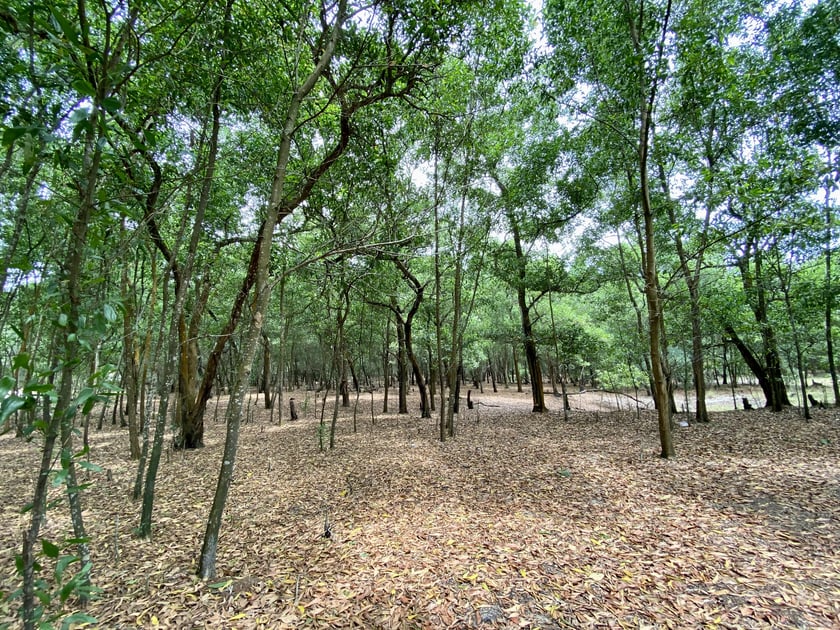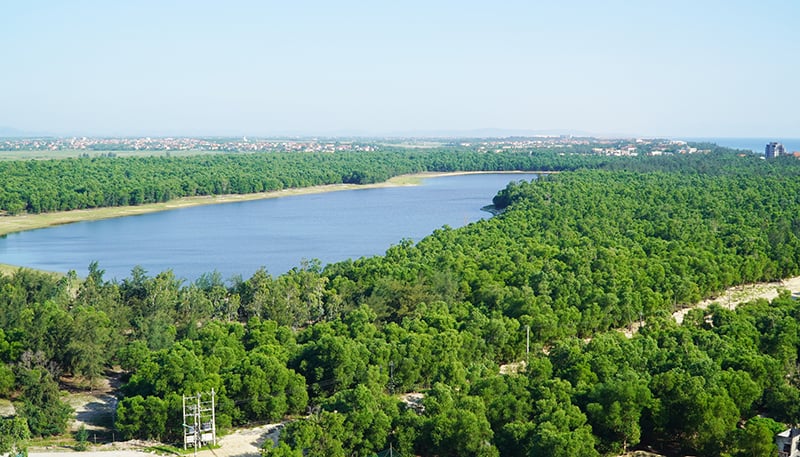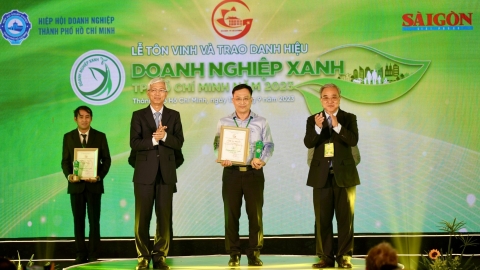On the journey of “returning to the source”, visiting our uncle’s house in Quang Binh, visiting the famous historical sites of the old battlefield in the steel land of Quang Tri… on the last day of the trip, we rented a motorbike to drive around. We finally found the famous noodle shop in Dong Hoi and then planned to go to a cafe. The blue sky, white clouds, and yellow sunshine of a Sunday morning made our journey uncertain and wandering, and fate led us astray on a dirt road covered with red sand, to a scenic spot, an archaeological site with a rather strange and interesting name: Bau Tro.

The name “Bau Tro” comes from the local dialect. Accordingly, the lake in the Central dialect is called “Bau”, “Tró” is the ancient language of the indigenous people.
Surprise mixed with curiosity and delight, because in the middle of a type II urban area that is gradually becoming bustling and crowded like Dong Hoi city, there suddenly appears a forest with regular, green and peaceful carpets of trees. The further you go, the more peaceful you feel with the fluttering butterflies in the early morning, the rustling sound of leaves occasionally mixed with the high pitch of chirping birds. The green, regular and lush carpets of grass under the tree canopy prove that this place is rarely visited. The further you go towards the water's edge, the thicker and harder the grass becomes because it grows from the patches of fine white sand, there are old clumps of grass that have not yet faded the dry, burnt features of the Central dry season with the wind, sand and hot sun that just passed.
And a clear, blue freshwater lake appeared peacefully in the calm, beautiful morning, making us surprised and delighted. Why is such a lovely landscape so little known, so little seen, heard, read about in the media promoting tourism? Passing the ancient casuarina tree with its twisted roots typical of plants in the windy and sandy region is a long, gentle shore. The lake feels almost pristine, without the appearance of concrete embankments or the noisy green and red figures of tourism. The calm, gentle surface of the water occasionally ripples with the shadows of fish splashing. Near the trail, we can faintly see a small boat the size of a Southwestern boat and a few long, dry tree trunks placed as a bridge at a place deep enough for people to get water.

Green forest surrounds Bau Tro
After looking around, admiring and taking out our phones to locate, we were delighted because Bau Tro lake was only about 100 meters from Nhat Le beach. The name "Bau Tro" comes from the local dialect. Accordingly, the lake in the Central dialect is called "Bau", "Tro" is the ancient language of the indigenous people. Legend has it that Bau Tro lake is the place with the cleanest fresh water source that the people here used only on important occasions such as parties and death anniversaries, that is the reason for the simple and rustic bridges we saw above.
Bau Tro is associated with mysterious folk tales. One story says that the lake was formed from the footprint of a giant when passing through this area, because the shape of the lake resembles a very large foot. Another story says that the lake was formed from the water of an underground river flowing in the Quang Binh area.
Leave your shoes in a corner, take a walk, feel the soft sand mixed with the still wet water and the soft night dew under your feet. When you get to a place near the road, sit on a fallen tree trunk, happily pose for some unique photos and then leave. On the way out, you will come across a time-stained stele engraved with brief information about this place like a coastal beauty. It turns out that Bau Tro is an important freshwater lake for Dong Hoi, so it is still kept intact and clean by the local government to ensure the health of the people of the whole city. This lake is famous for archaeology when French and Vietnamese archaeologists excavated artifacts dating back about 5,000 years at this location. Bau Tro artifacts are important relics for the study of traces of Vietnamese people in the Central region.

Located in the North of Nhat Le estuary, Quang Binh, among high sand dunes, Bau Tro makes anyone who sets foot here for the first time surprised by its poetic beauty.
In the summer of 1923, two French correspondents of the French Institute of the Far East, Max and Depiruy, discovered the archaeological site at Bau Tro. At the end of the summer of that year, the geologist and archaeologist Étienne Patte organized the excavation. The artifacts found and published included many stone axes, flakes, quartz stones, grinding tables, broken pottery pieces... proving the life of ancient Vietnamese people present here since the Neolithic period.
In early 1980, Hue University organized a re-excavation of this Bau Tro site, more than 100 meters west of E. Patte's excavation pit. The artifacts collected included many axes, grinding tables, pestles, spearheads and countless broken pieces of pottery from pots, pans, vases, jars... Since then, archaeologists have used the name of this site to name the late Neolithic culture distributed in the coastal areas of Nghe An, Ha Tinh, Quang Binh, Quang Tri, Thua Thien as Bau Tro culture.
Just ordinary tourists, we seem to have discovered something new and interesting. If we have the chance to come back, we will definitely spend more time in Bau Tro, maybe gather for a picnic to enjoy the beautiful, peaceful, poetic, almost pristine scenery of this place and feel excited when we are in the place where giants once walked or where about 5,000 years ago, our ancestors lived.



































